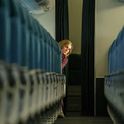Terry Gilliam’s “beguiling phantasmagoria” of a Damnation of Faust in 2011 was representative of English National Opera’s bold approach
“Why does London need two opera houses?” It’s a question that has haunted British cultural life with deathless persistence since 1912. During English National Opera’s hundred year history the company has been threatened with closure no fewer than seven times. It has endured sustained attack from the Arts Council, major internal strife, and in 2004 its debt was estimated at £4m. Yet less than a decade after ENO was rescued from receivership, the company is financially healthier and artistically more urgent than ever. How?
On the eve of a 2012/13 season that will stage no fewer than nine new productions and two UK premieres, the answer lies with two men: ENO’s artistic director John Berry and its music director Edward Gardner. Despite funding cuts, they have resisted the urge to retreat into the safety of 19th-century opera’s capacious bosom, to stage endless classic revivals of La Traviata, Carmen and La Bohème that would all but guarantee audiences. Instead, under their leadership, we’ve seen a shift towards more marginal repertoires—to baroque opera, neglected 20th-century classics, and especially works by living composers.
“Contemporary opera is now at the core of what we do,” Berry recently claimed. It’s a trend that seems welcome to current audiences, and increasingly among that most mythical of cultural demographics: younger opera-goers.
Writing in the Musical Times in 1993, Tom Sutcliffe addressed a prejudice that still lingers today, arguing that “ENO is not second best to Covent Garden. It is different, more theatrical, less vocal.” This mandate of music-as-drama has remained constant since ENO’s socially motivated origins back in 1889, when it offered affordable, accessible operatic excerpts for those too poor or too alienated to visit the Royal Opera House.
But during the 1980s this laudable desire for integrated, vernacular music-drama became distorted under the “Powerhouse” leadership of Peter Jonas, Mark Elder and David Pountney. Staging conceptually extreme and provocative productions, they drove the company into debt, achieving critical notoriety and public neglect.
A crucial part of the revival in the company’s fortunes has been Berry and Gardner’s decision to reinterpret rather than reject these bold gestures. A policy of employing first-time opera directors from the worlds of stage and film has brought with it disaster (Mike Figgis’s Lucrezia Borgia) and confusion (Rufus Norris’s Don Giovanni), but eventually triumph. No one who saw Terry Gilliam’s beguiling phantasmagoria of a Damnation of Faust can deny the exhilaration generated by new creative eyes, or that it was the pearl worth any amount of directorial grit.
Because there has been grit, make no mistake. Confrontation remains a key element of the ENO’s artistic credo, but where previously challenging concepts began and ended with provocation, they now find themselves allied to inventive interpretation. Le Grand Macabre, staged by Barcelona’s directorial collective La Fura dels Baus in 2009, had singers entering and exiting through the assorted orifices of a gigantic female nude and the libretto included phrases like “Flatulent fist-fucker.”
The same principle of creative freshness sees ENO now operating more like a theatre company, generating fewer performances but a much higher proportion of new works and new productions. It’s a sacrifice, particularly when you consider Berlin’s three opera houses (for a population less than half the size of London) which between them generate over 500 performances per season, but far better to cut the number of performances than the number of productions. Fewer performances means fewer seats to sell, supporting creative risk-taking rather than constraining it by the need to sell-out the house 20 times over.
Another change to ENO’s practice has seen not only more frequent off-site excursions to smaller London venues (generating intimate gems such as Benedict Andrews’s The Return of Ulysses at the Young Vic) but also co-productions with other international houses. Far from diluting the company’s identity (as Andrew Clark of the Financial Times has claimed) or rendering it obsolete (“I’m still not exactly sure what purpose it serves,” observed Peter Conrad in the Guardian in 2009), this trend constantly reinvigorates ENO’s viewpoint, forcibly extending it beyond the navel-gazing “National” agenda its name implies. An opera company whose reach extends beyond our borders, ENO is less and less the product of solely British creatives.
But while visual styles and multimedia advances are keeping ENO current, its insistence on vernacular performances has remained unchanged. Despite regular attacks from purists (more vigorous since the introduction of surtitles in 2005), Berry and chief executive Loretta Tomasi understand that at the root of London’s need for two opera houses is the question not only of accessibility but also invention.
The appointment of former television producer Peter Bazalgette as ENO’s chairman in May 2012 sent a clear message from the institution to its audiences. Bazalgette understands both art and entertainment, and his cultural passions are grounded by financial savvy. In a gloomy economic climate both he and we will be demanding a ballsy, contemporary opera company that can challenge and charm its audiences while still balancing the books—something Ed Gardner and John Berry are well on the way to achieving.
Does London need two opera companies? Perhaps it’s time for the Royal Opera to start asking itself that question.












